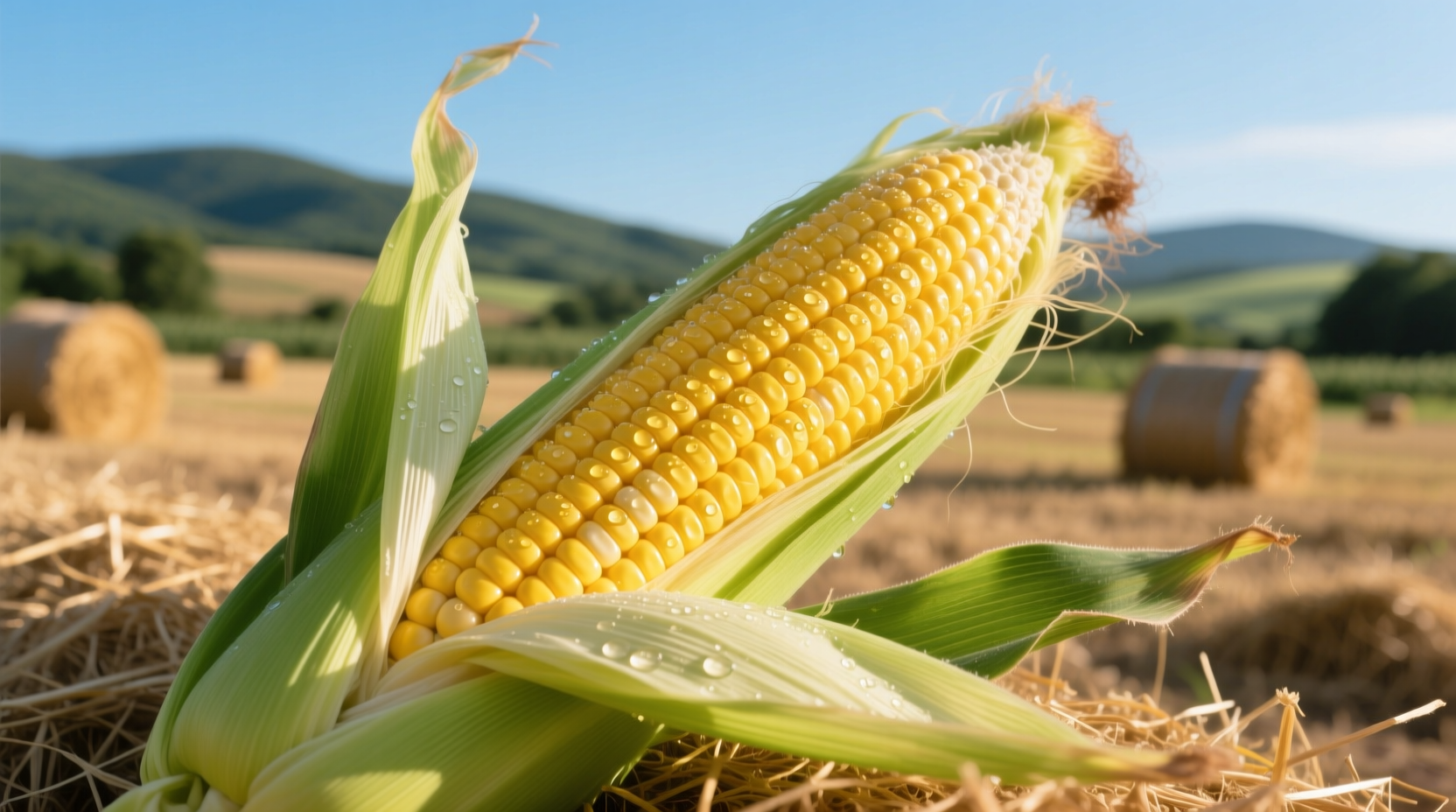Perfectly cooked corn on the cob delivers that sweet, juicy crunch we all crave during summer months. Yet many home cooks struggle with tough kernels, uneven cooking, or lost flavor due to common mistakes in preparation and timing. As a culinary professional with years of experience teaching cooking techniques, I've tested every method to determine the most reliable approaches for consistently delicious results. Whether you're preparing corn for a backyard barbecue, weeknight dinner, or holiday meal, understanding the science behind corn cooking ensures you'll never serve disappointing corn again.
Selecting Fresh Corn at the Market
Quality corn starts with proper selection. Look for bright green, snugly wrapped husks that feel cool and slightly damp to the touch. Avoid husks that are dry, yellowed, or have brown spots. Gently peel back a small section of the husk to check the kernels—they should be plump, tightly arranged, and release milky liquid when punctured. The silk should be golden brown, not black or dry.
According to the USDA Agricultural Research Service, peak corn season runs from June through September in most regions, when sugar content is highest. During this window, corn converts sugars to starches more slowly after harvest, preserving that signature sweetness.
Proper Corn Preparation Techniques
Before cooking, properly prepare your corn:
- Remove husks and silk completely
- Rinse under cool water to remove any remaining silk strands
- Do not soak corn before cooking (this dilutes flavor)
- Trim any uneven ends for stable cooking
Many cooks make the mistake of soaking corn before cooking, believing it adds moisture. However, corn kernels are already 80% water. Soaking only dilutes the natural sugars and can make corn soggy.

Boiling Method: Classic and Reliable
Boiling remains the most accessible method for perfect corn:
- Fill a large pot with enough water to cover corn
- Bring water to a rolling boil (do not add salt)
- Carefully add corn using tongs
- Cook for 3-5 minutes—no longer!
- Remove immediately and serve
Timing is critical: overcooking converts sugars to starches, resulting in tough, less sweet corn. The University of Illinois Extension confirms that boiling beyond 5 minutes significantly reduces sweetness and texture quality.
Grilling Method: Maximum Flavor Development
Grilling creates caramelized spots that enhance corn's natural sugars:
- Preheat grill to medium heat (350-400°F)
- Remove husks and silk
- Brush lightly with vegetable oil
- Place directly on grill grates
- Cook 15-20 minutes, turning every 5 minutes
- Kernels should have light brown spots when done
For a smokier flavor, try the foil packet method: wrap husked corn in aluminum foil with butter and herbs, then grill for 20-25 minutes. This steams the corn while infusing flavors.
Microwave Method: Fastest Indoor Option
Surprisingly effective for quick preparation:
- Leave husk intact
- Trim any excess silk hanging from top
- Place corn on microwave-safe plate
- Microwave on high for 3-4 minutes per ear
- Let rest 1 minute before carefully removing husk
This method steams corn inside its husk, preserving maximum moisture and flavor. Penn State Extension research shows microwaved corn retains more nutrients than boiled corn due to shorter cooking time and no water leaching.
Oven Roasting: Hands-Off Approach
Ideal when cooking multiple ears simultaneously:
- Preheat oven to 375°F
- Remove husks and silk
- Place corn on baking sheet
- Roast for 20-25 minutes, turning halfway
- Kernels should be slightly blistered when done
| Cooking Method | Time Required | Flavor Profile | Best For |
|---|---|---|---|
| Boiling | 5-7 minutes total | Clean, sweet corn flavor | Quick weeknight meals |
| Grilling | 15-25 minutes | Smoky, caramelized notes | Summer barbecues, outdoor cooking |
| Microwaving | 4-5 minutes | Intense natural sweetness | Single servings, minimal cleanup |
| Oven Roasting | 20-30 minutes | Rich, roasted corn flavor | Cooking multiple ears at once |
Serving Your Perfectly Cooked Corn
Timing matters when adding butter—apply immediately after cooking when kernels are hot enough to melt butter but not so hot that butter burns. For even distribution, run a butter knife vertically down the cob first, then rotate and repeat around the circumference.
Try these flavor variations:
- Classic: Butter, salt, and freshly cracked pepper
- Mexican street corn: Mayonnaise, cotija cheese, chili powder, lime
- Herb butter: Mix softened butter with chopped parsley, chives, and garlic
- Spicy kick: Cayenne pepper and smoked paprika blend
Troubleshooting Common Corn Problems
Tough kernels: Almost always caused by overcooking. Stick to the 3-5 minute rule for boiling.
Dry corn: Results from cooking in salted water or insufficient moisture during grilling. Always cook in plain water.
Uneven cooking: Rotate corn frequently when grilling or roasting to ensure even exposure to heat.
Lack of sweetness: Could indicate corn was past its prime or overcooked. Fresh corn should be cooked within 1-2 days of purchase for best results.











 浙公网安备
33010002000092号
浙公网安备
33010002000092号 浙B2-20120091-4
浙B2-20120091-4